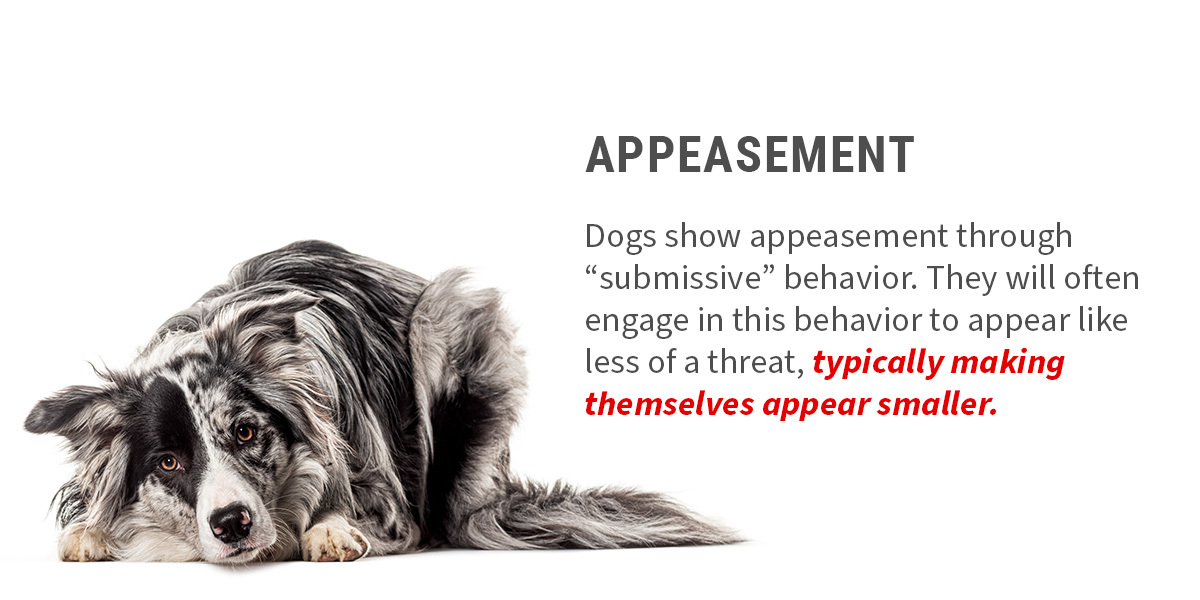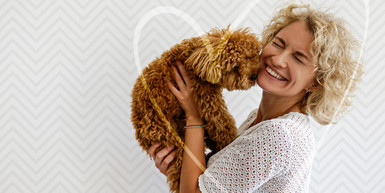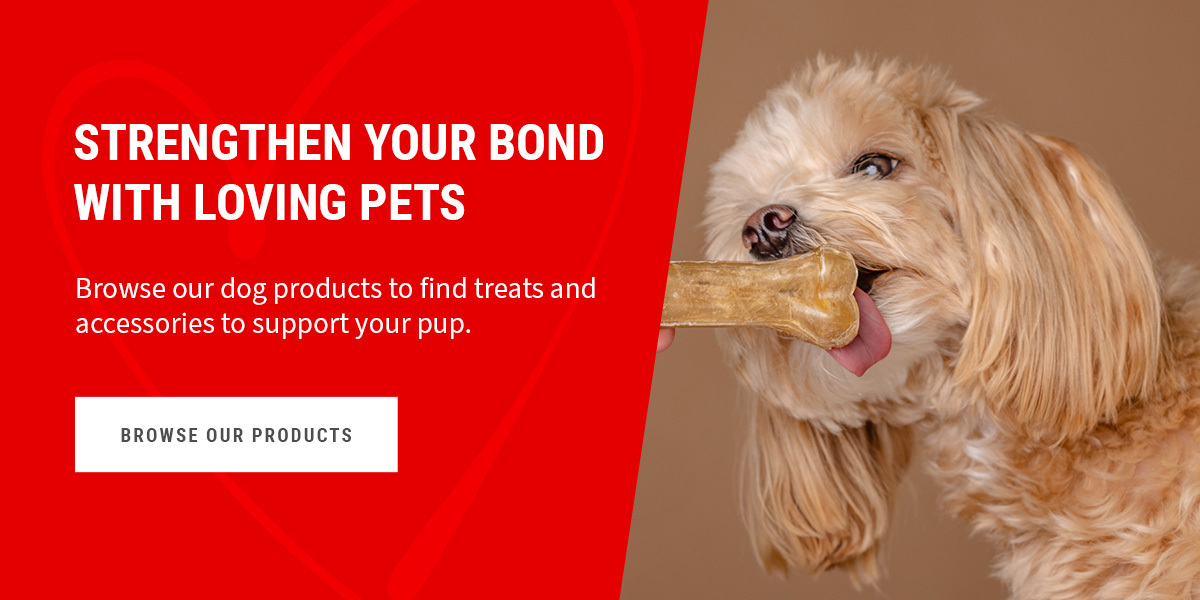Understanding Your Dog's Body Language
Dogs can be expressive. Everything from their eyes to their tails gives you clues about what they're feeling or wanting. Verbal signs like growls, whines and yips often alert you to your pup's needs, but what about those nonverbal cues? Dogs often communicate through their bodies, which can lead to misunderstandings if you're unfamiliar with the meaning behind their actions.
Thankfully, you can brush up on your dog communication skills to make things easier for you and your furry friend. You're already a dog lover. Now it's time to become a dog whisper by strengthening your understanding of everyday dog signals.
Why Understanding Dog Language Is Important
You want what's best for your pet, but communicating is much harder with furry friends than with fellow humans. That's why it's so important to understand the body language of a dog. Along with meeting your pet's needs, reading dog body language can bring benefits like:
- Strengthening your bond: You can foster a stronger connection with your pup by recognizing their cues and better understanding their thoughts and feelings. Your dog can feel more comfortable with you and in your home when they feel you're meeting their needs.
- Improving training and communication: Reading body language can guide training, which can be especially helpful when bringing a new dog into your home. You can reduce misunderstandings and boost pet cooperation for a more harmonious relationship.
- Enabling better care: Communicating with your pet is about more than knowing when they are happy or hungry. Recognizing the signs of anxiety, fear, stress and other adverse feelings can prompt you to intervene at critical moments to ensure the best care possible.
- Helping identify health conditions: Some unique behaviors can be signs of health conditions. For example, strengthening your dog communication can help you determine whether your pet is feeling normal levels of frustration or experiencing separation anxiety. Either way, you can provide the necessary care to address the issue.
- Promoting safety and well-being: Ultimately, enhancing your pet communication promotes safety and well-being for everyone involved. Understanding your pet's needs can relieve their feelings of stress or anxiety. Alternatively, you can recognize when you may need to separate your dog from other people or animals to prevent a dangerous situation from arising.
Dog Behavior Explained

The first step to understanding your dog's body language is breaking down common actions. You may know what a few of these actions mean, but in many cases, there are several other cues to look for. Even something as seemingly simple as tail wagging has multiple meanings. Take a look at these common dog body language actions.
1. Tail Wagging
Most people think a wagging tail is a sign of a happy pup. This is true in some cases, but people often misinterpret the action. Rather than equating tail wagging to happiness, it helps to equate it to arousal. The faster the tail is wagging, the more aroused the dog. The slow, long sweeps you recognize as a greeting often indicate that your dog is relaxed. Alternatively, twitch-like, quick wags signify higher levels of arousal, which can be positive or negative depending on the situation.
Interestingly, the direction of the tail wagging can tell you whether your pup is feeling positive. Right-biased wagging often indicates positive feelings, while left-dominating sways can be a sign of anxiety, aggression or stress. The tail position can also give you more clues. Higher tails indicate assertiveness and confidence, while tails between legs or pointing to the ground indicate stress or fear.
2. Raised Hackles
Hackles are the hair on a dog's neck and back. Depending on your dog's feelings, this fur can fluff up down the back, across shoulders or down to the tail. Think of when you get goose bumps. This involuntary reaction can result from several emotions, including fear, stress or excitement. You'll often need to rely on other nonverbal cues like eye contact to determine if your dog is experiencing a positive or negative emotion.
3. Weight Distribution
Posture and weight distribution are among the most obvious signs of a dog's intentions. You're likely already familiar with some of the more common signs. For example, a cowering dog with their body close to the ground is a clear indication of stress or fear.
Alternatively, what most people think is an invitation for belly rubs, a dog exposing their belly could be a sign of stress. While it's true that a relaxed dog might want some belly contact, an anxious pup may revert to this position and urinate a little to show appeasement.
Dogs who shift their weight forward are usually trying to get closer to an object. This type of posture often indicates that your dog is interested in something. However, if your dog also exhibits cues like a high, twitching tail, they could be experiencing aggression. On the flip side, dogs will often use the play bow pose, with their rump in the air and chest on the ground, to encourage play with people and other animals.
4. Communicating With Their Eyes
Dogs use their eyes to communicate as well. Similar to people, dogs can have soft or hard eyes. Relaxed lids or the appearance of squinting forms soft eyes. These expressions indicate happiness or calm. Hard eyes refer to that “going cold” experience. Sometimes, hard eyes exhibit in the form of a hard stare or similar expression. In these times, the dog usually feels aggressive or considers something a threat.
Eye contact is equally important. Looking away is often an attempt to calm situations. Stressed pups often avoid eye contact, which many people mistakenly interpret as stubbornness when it's really a show of discomfort. Furthermore, a dog showing the whites of their eyes can be their way of expressing anxiety.
5. The Zoomies
Most people think of “the zoomies” as a show of excitement and playfulness. Picture your pup running around your yard or chasing after a child they love. Seems like a happy picture, right? Well, the zoomies aren't always an indicator of joy. Sometimes, dogs become hyperactive when they have experienced stress for a prolonged period.
Running around erratically is a tactic for getting rid of this energy they've been holding. Sometimes, the zoomies might be your pup's way of defusing a situation or avoiding something that makes them uncomfortable. Similarly, a stressed pup may shake their body even if it's not wet. This is another way to self-soothe during times of uncertainty or stress.
6. Yawning
On the flip side of your pup's rambunctious actions, we have the seemingly calm ones. For people, yawning is often a sign of being tired, but for dogs, this action can be a little more meaningful. It can be a dog's way to diminish feelings of nervousness. Yawning paired with walking away, panting and looking away from people can indicate that your dog isn't comfortable in their surroundings yet.
Breaking Down Canine Body Language by Feeling
With so many meanings behind each action, it may be easier to look backward. Rather than trying to pinpoint each action to determine a feeling, consider the common signs of various feelings for quick identification. Take each emotion and determine if your pup exhibits actions consistent with that feeling. Here are some of the most common dog feelings.
Relaxed

Dogs who are comfortable in their environment will often display loose postures. Overall, the dog will have a wiggly, soft appearance and may overexaggerate movements during play. Happy or relaxed dogs will often have:
- Natural ear positions: The dog will hold their ears in the natural position. For some pups, this means their ears will flop slightly forward. For pointed-ear dogs, the ears will stand straight.
- Relaxed mouth: If your dog's mouth is closed, it will be free of tension. Dogs with an open mouth will have relaxed pants when comfortable.
- Neutral eyes: Look for soft eyes and a neutral expression. Your dog's head should be free of wrinkles, and your pup may show a submissive grin.
- Wide tail wags: Relaxed pups will generally sweep their tails in wide wags, even with their spine height. During play, the tail may raise slightly higher.
Nervous or Stressed
Many new environments, people or animals can cause a dog to feel stressed or nervous. Many times, your dog will perform calming signals to relieve their feelings. These actions aim to de-escalate a stressful situation or provide an outlet for pent-up energy. Signs of nervousness or stress include:
- Calming signals: Common calming signals include looking away, freezing, lip licking or smacking, raising a paw, moving in a curve, yawning, scratching and shaking off.
- A lack of eye contact: Many stressed pups will avoid eye contact to express discomfort. They may also look toward their trigger and quickly look away.
- Exaggerated movements: Frequent lip licking, obvious yawns and sneezing often indicate distress. Your pup may also direct their attention to self-grooming or excessive scratching.
Alert
An alert dog is unsure about their environment. They typically want to learn more and will assess nearby information for clues. The overall posture is evenly distributed, allowing the dog to be “ready” for their next steps. Look for:
- Perked ears: Pointed or perked ears indicate alertness. If you have a floppy-ear breed, look at the base of their ears.
- Tense mouth: The mouth will typically be closed and lack tension around the snout or in the lips.
- Wide eyes: Look for a focused expression and wide eyes. The forehead should be relaxed.
- Extended tail: Alert dogs will often extend their tails away from their bodies, typically at spine height. They may also wag their tails slightly.
Appeasement

Dogs show appeasement through “submissive” behavior. They will often engage in this behavior to appear like less of a threat, typically making themselves appear smaller. However, they may also expose their stomachs, sometimes peeing on themselves slightly. Other signs include:
- Pinned back ears
- Avoiding eye contact
- Squinting their eyes
- Holding tension in the mouth
- Pulling their lips to expose their teeth in a grimace
- Licking the muzzle frequently
- Tucking the tail or holding it low
- Raising a paw
- Engaging in slow movements
- Shifting weight backward to appear less threatening
Scared
Scared dogs often have stiff body language. You might notice curves in their back or a hunched posture with their head near the floor. Other signs include:
- Tight mouth: Fearful pups will often shut their mouths tightly. They may pull the corners of the mouth back. In some cases, you may notice increased panting as if they just performed a vigorous activity or the temperature changed.
- White eyes: If your pup is showing the whites of their eyes, they're likely angling their head away from a stressor but keeping eyes on it.
- Tucked ears: Look for tucked ears that sit against the head.
- Tucked tail: Many fearful dogs will press their tail against their belly. You can also look for an even weight distribution that shifts the dog's body away from potential triggers.
Aggressive
Dogs can experience several types of aggression. How they show aggression toward people may differ from their dog-to-dog body language or how they react around other furry friends (or foes). Most often, an aggressive dog will exhibit body language to show they're ready to react to their trigger. Common signs of aggression include:
- Ear position: If your dog is experiencing fearful aggression, they may hold their ears against the head. Alternatively, if your pup feels confident against a threat, they may prick their ears to the side or forward.
- Hard eyes: Most times, aggressive dogs will fix a hard stare on the stimulus causing the behavior. You'll often notice wrinkles on their forehead and find it hard to grab their attention.
- Mouth tension: Typically, aggressive dogs will have tension around the mouth. This may include a raised upper lip to expose their teeth or wrinkling around the muzzle.
- Tail: Fearful dogs may keep their tail low or tuck them under the body before acting on aggression but raise their tail during an aggressive act. A confident, aggressive dog will often keep their tail high above the body and may twitch it in a tight wag from side to side.
- Posture: Aggressive pups generally have tense and rigid postures, whether fearful or confident. They will typically create a stiff-legged stance with their body shifting forward.
Strengthen Your Bond With Loving Pets
Enhancing your understanding of canine communication is crucial for strengthening your bond with your pet and creating a supportive environment. Understanding your pup can also help make training easier and reduce misunderstandings, creating a more harmonious relationship between you two.
While on your journey to enhanced understanding, consider reinforcing the process with quality chews and treats. With Loving Pets, you can find dog treats with quality ingredients your pets will love. Whether you're rewarding positive behavior, trying to make a new pet more comfortable or simply looking to strengthen your bond, our products can help. Browse our dog products to find treats and accessories to support your pup.




